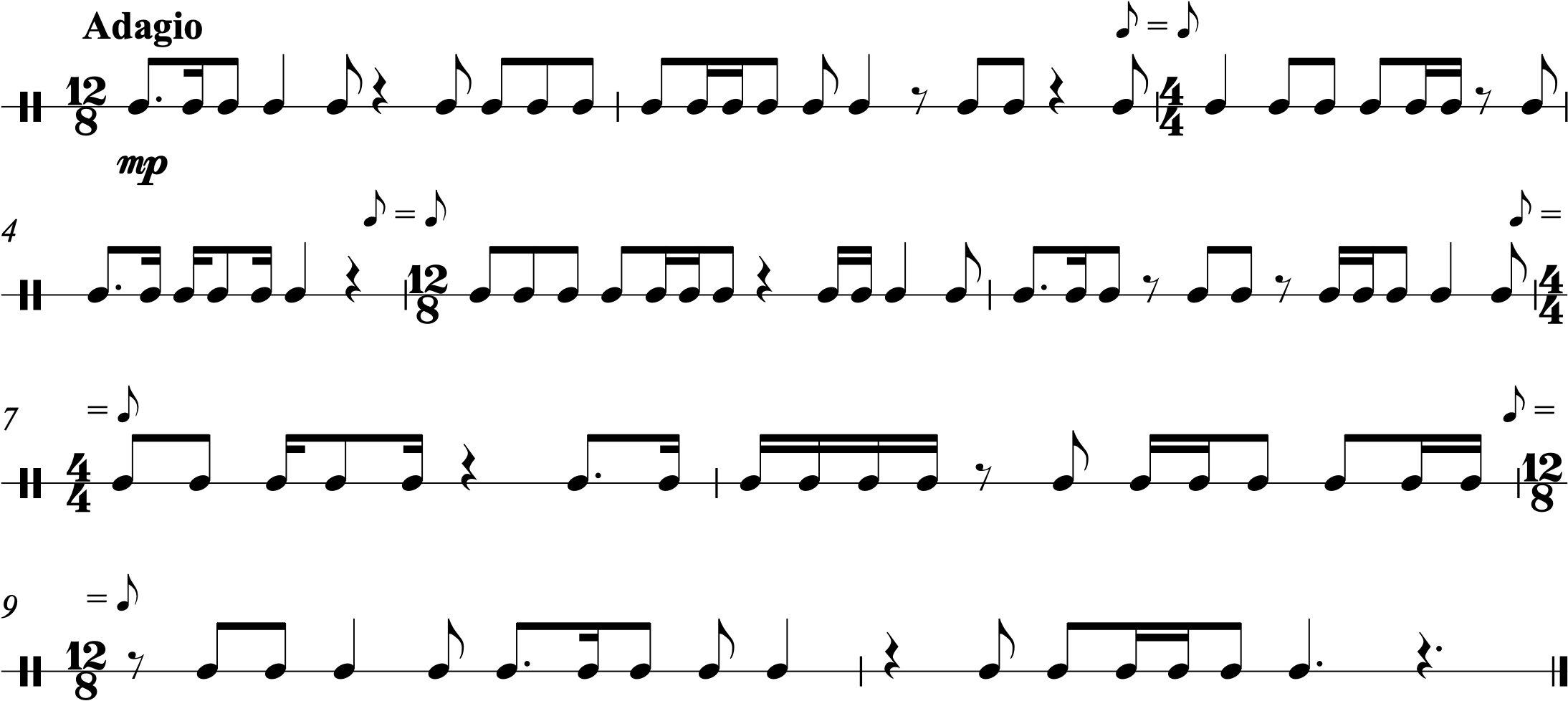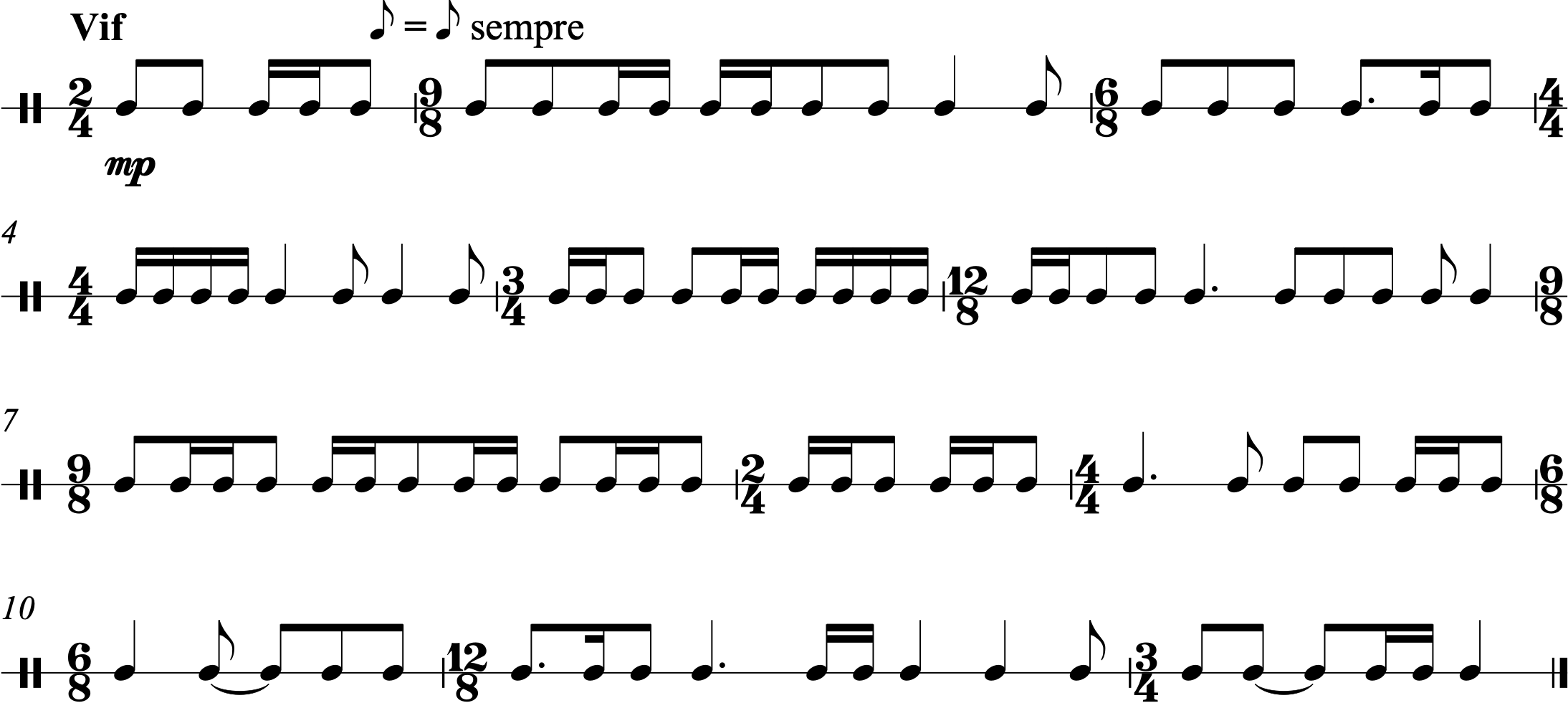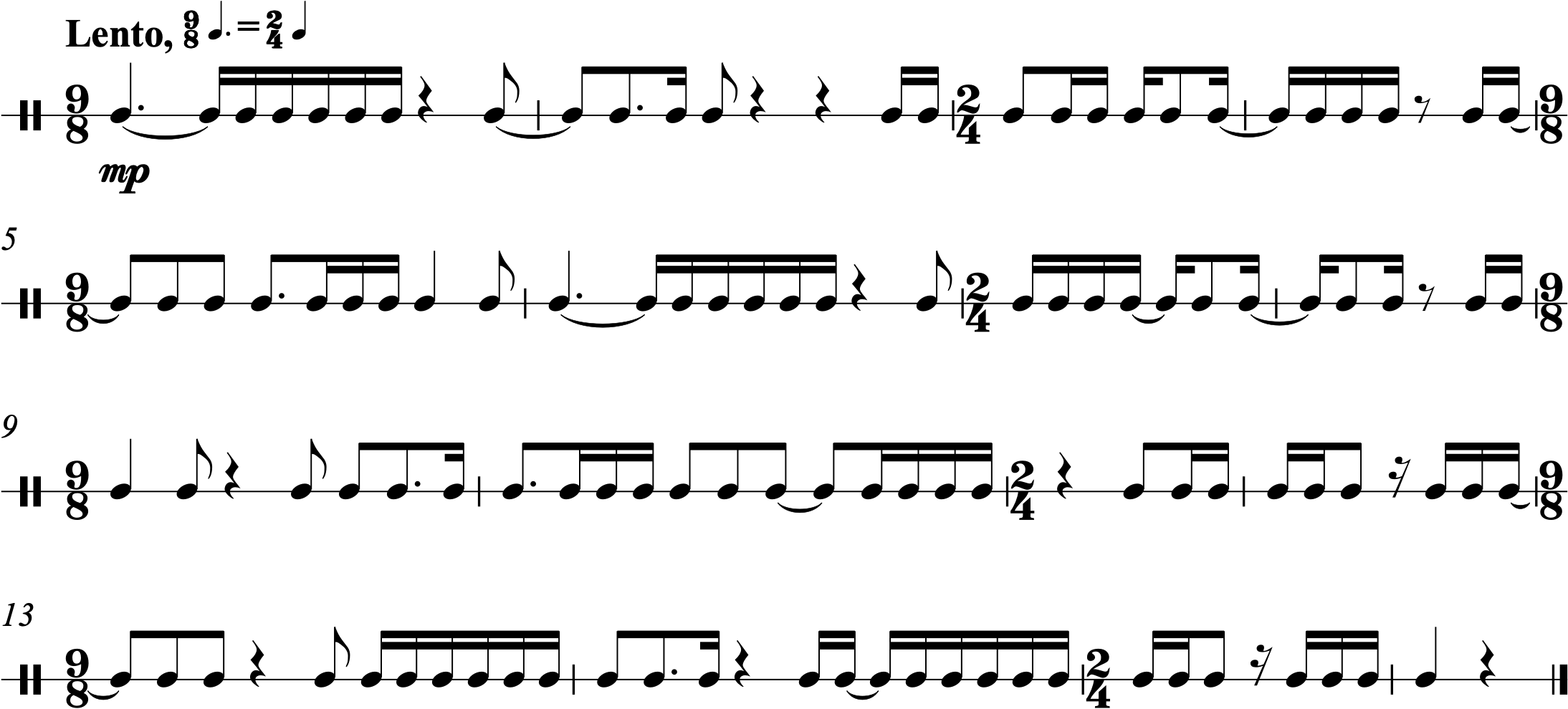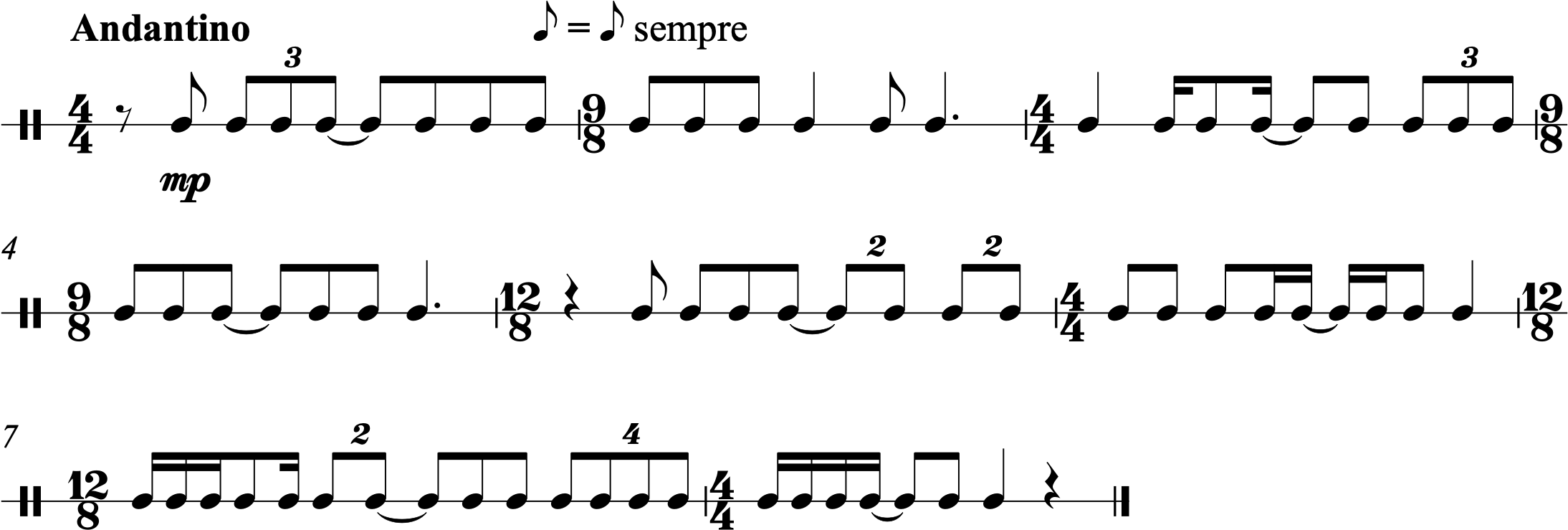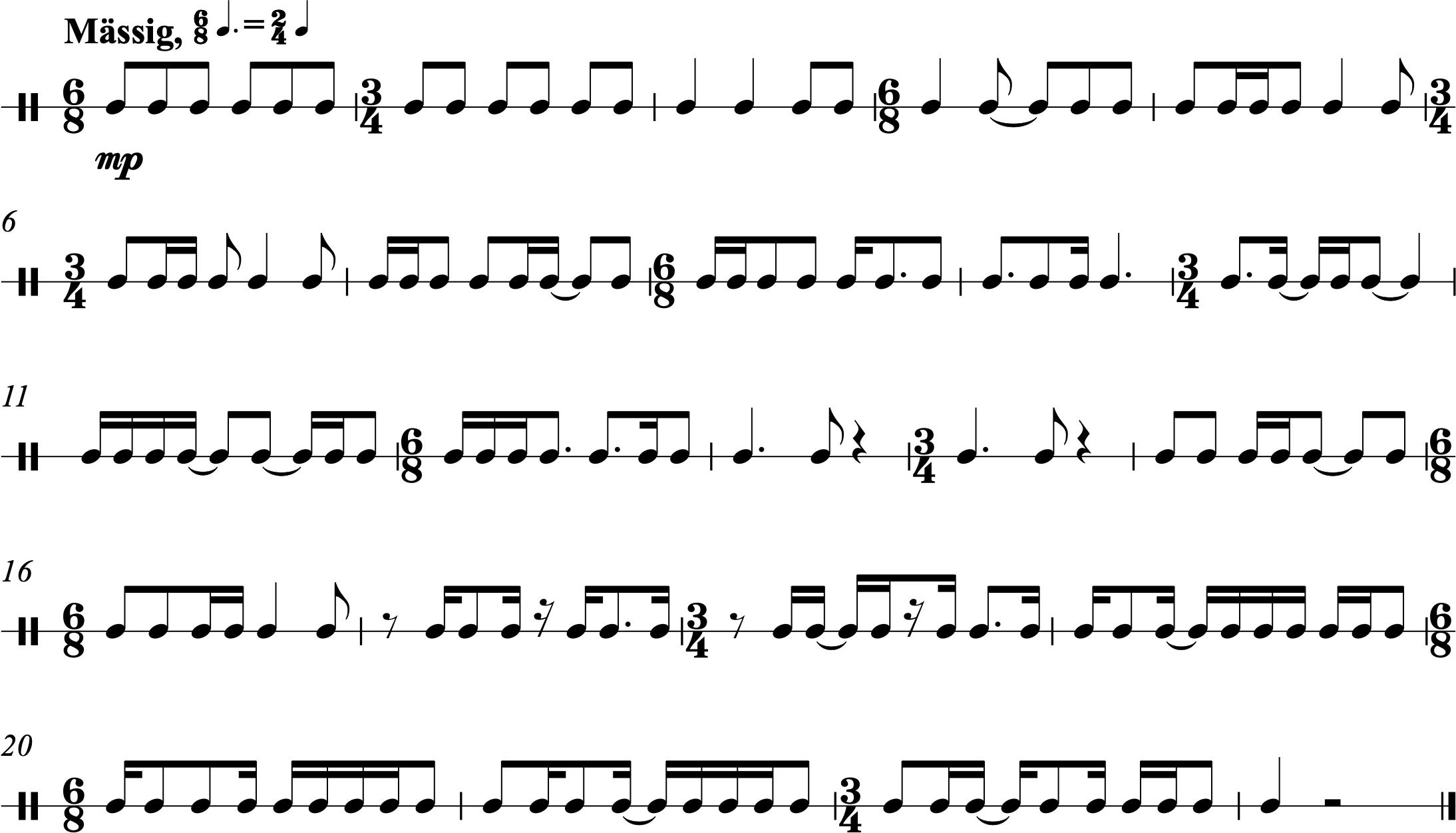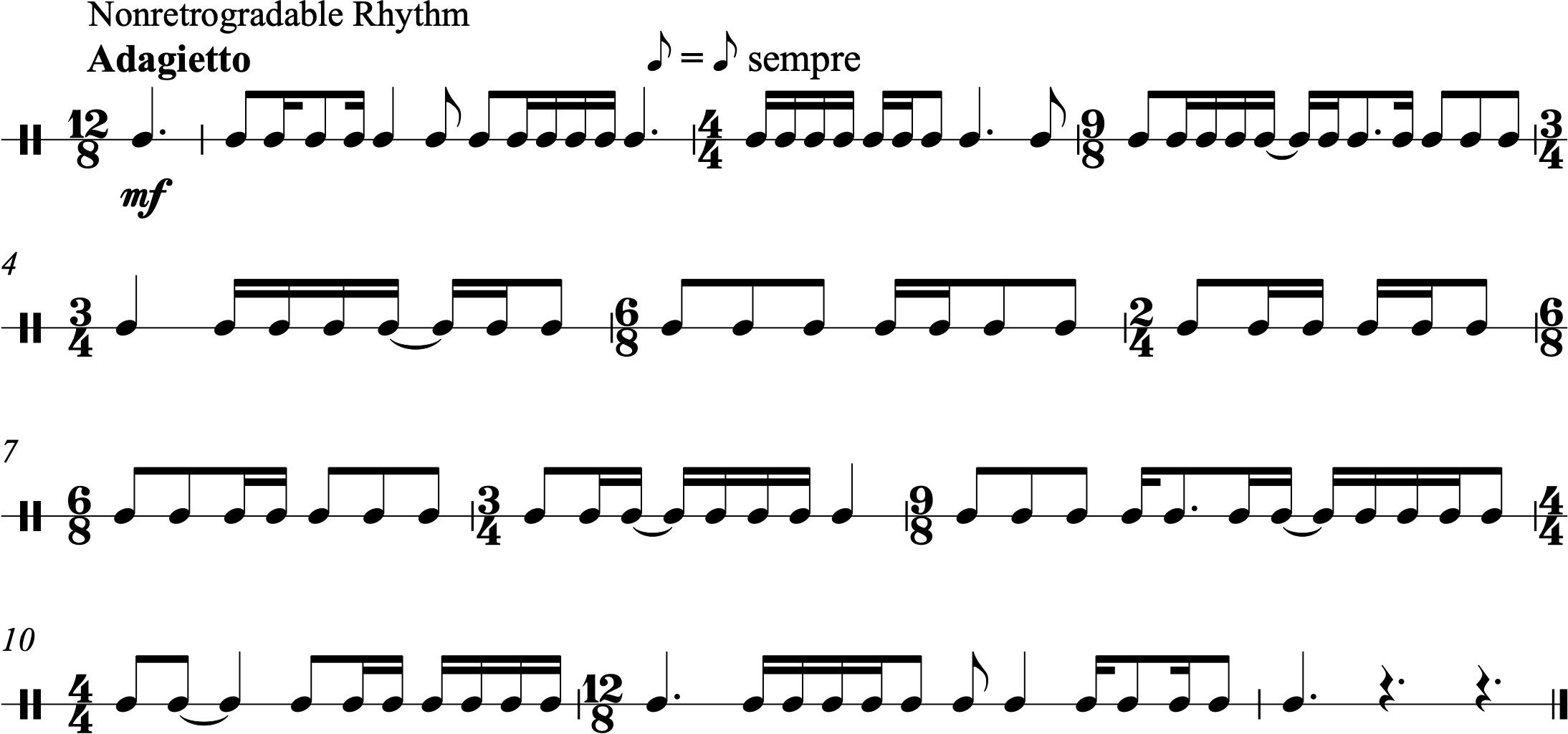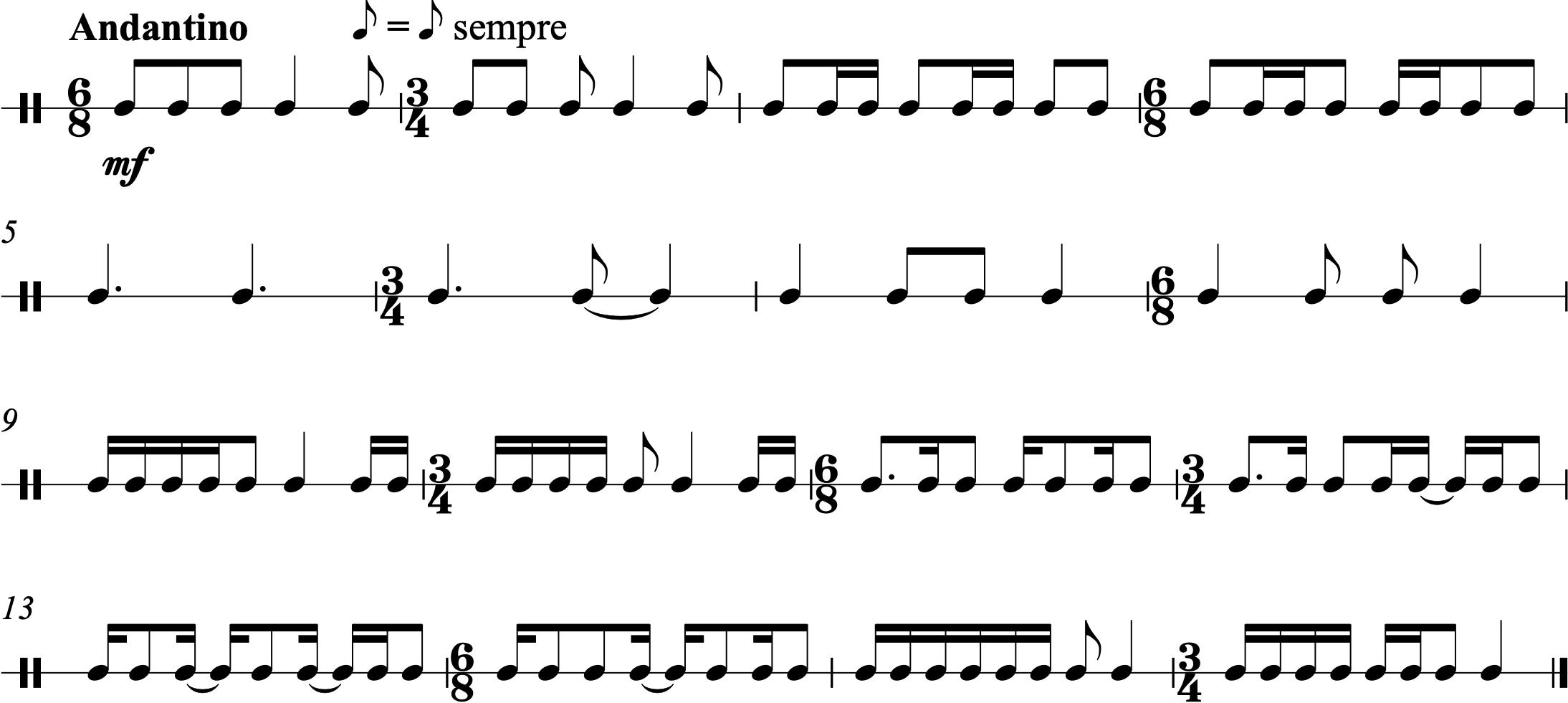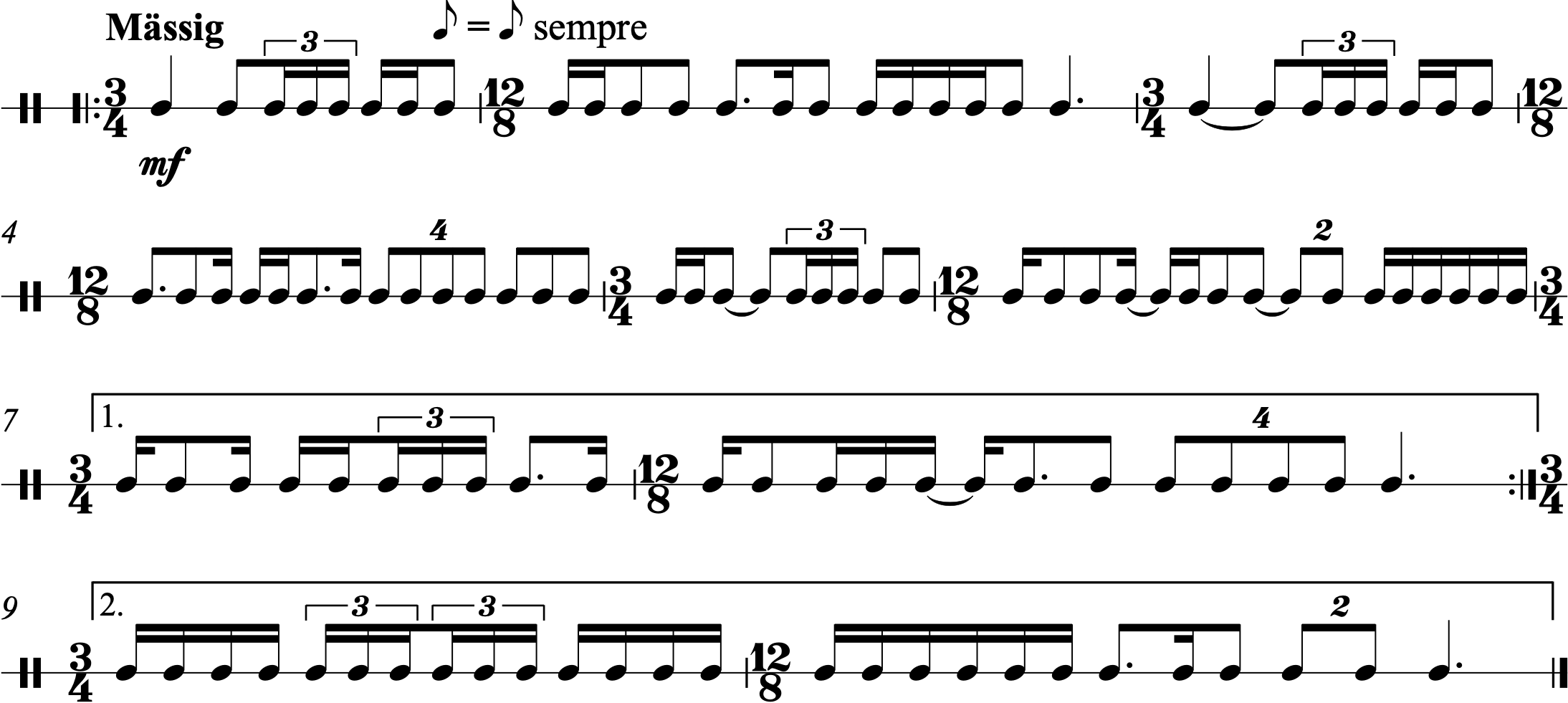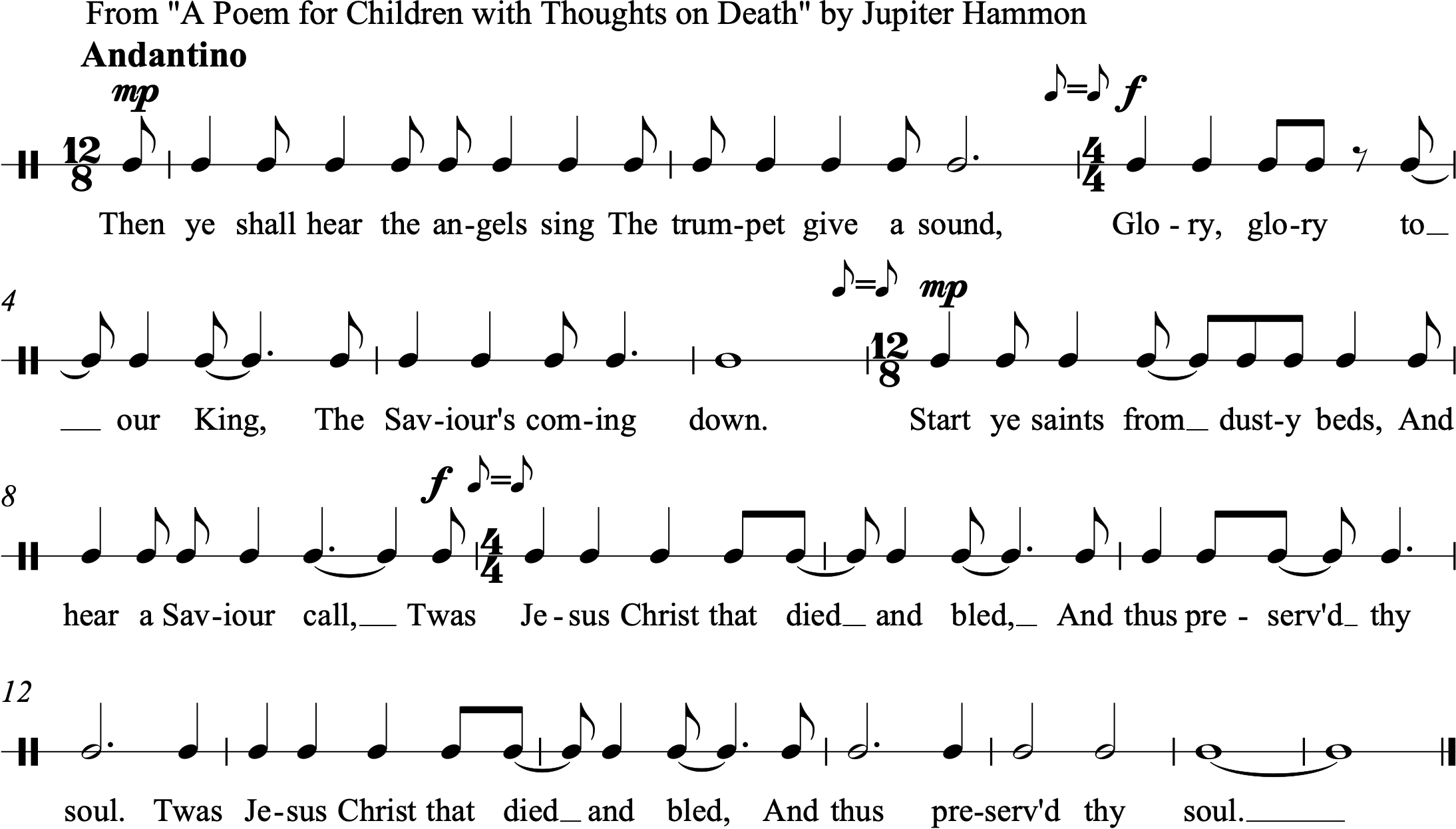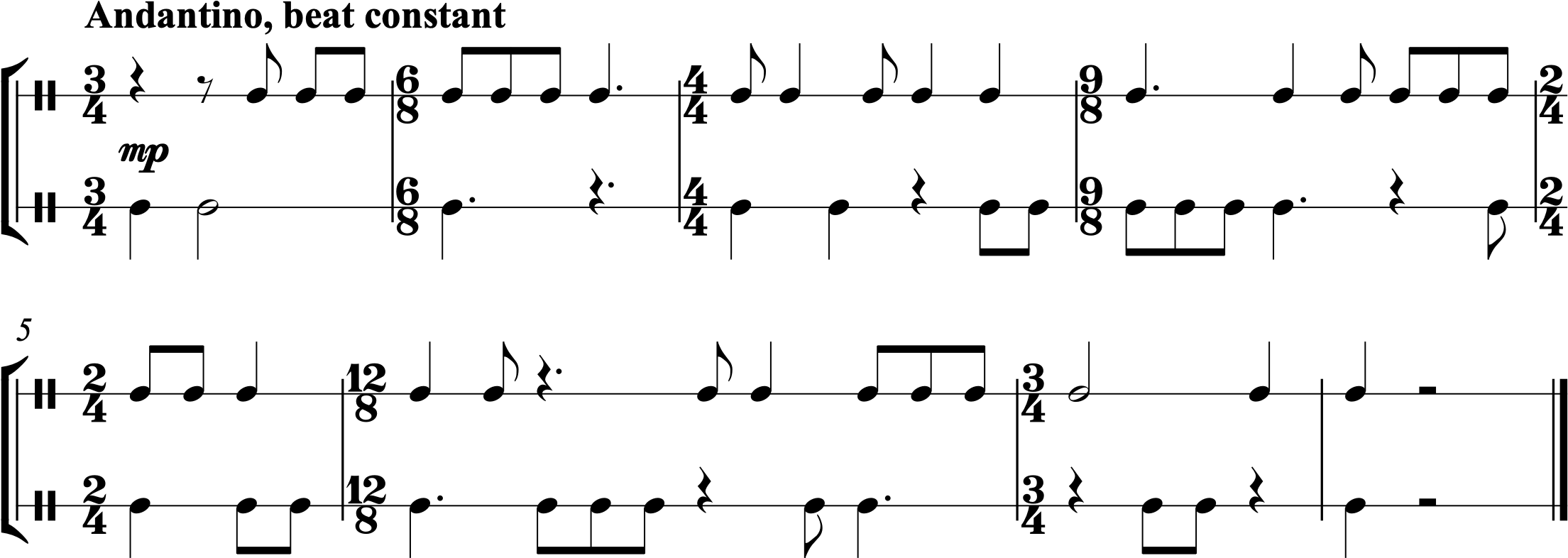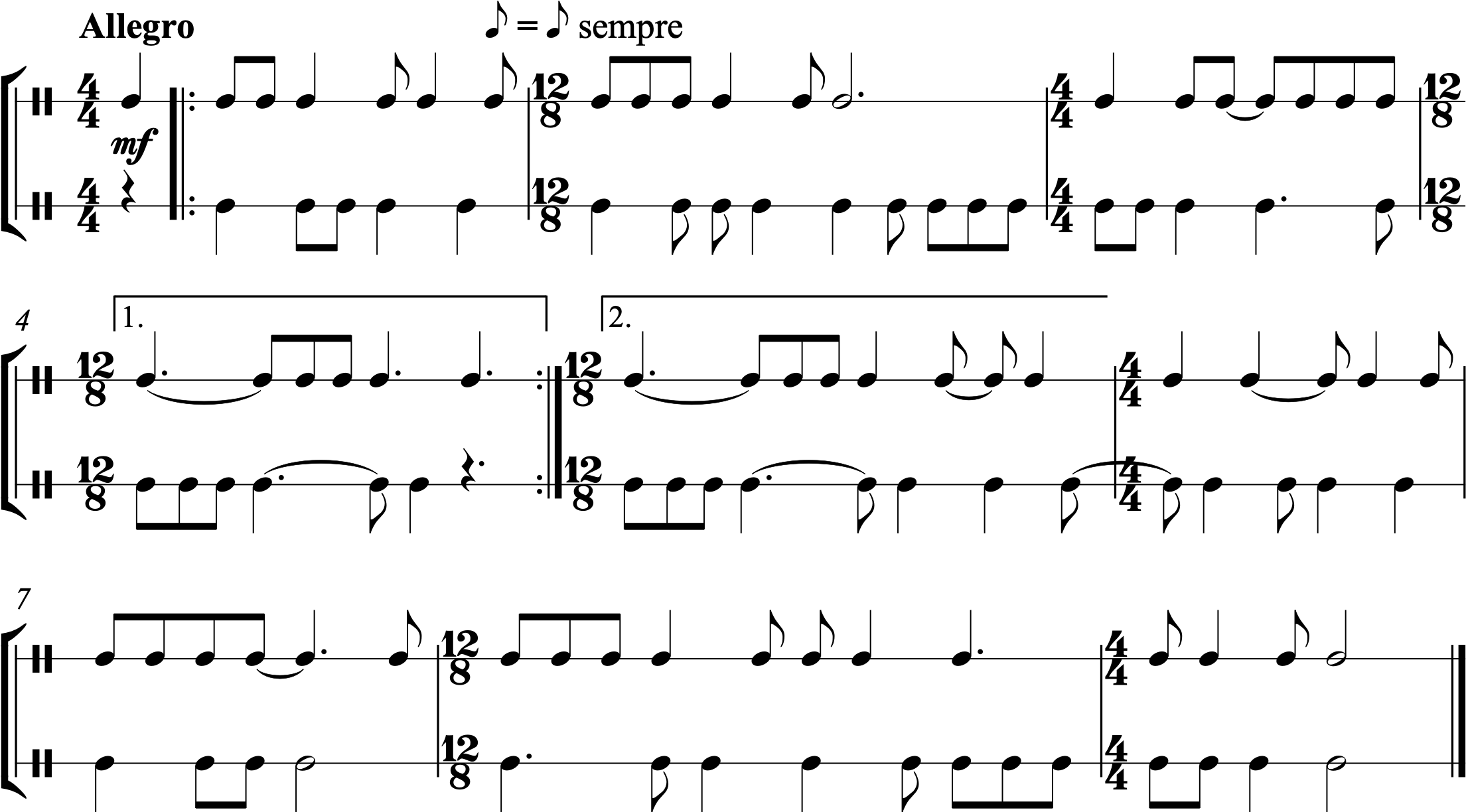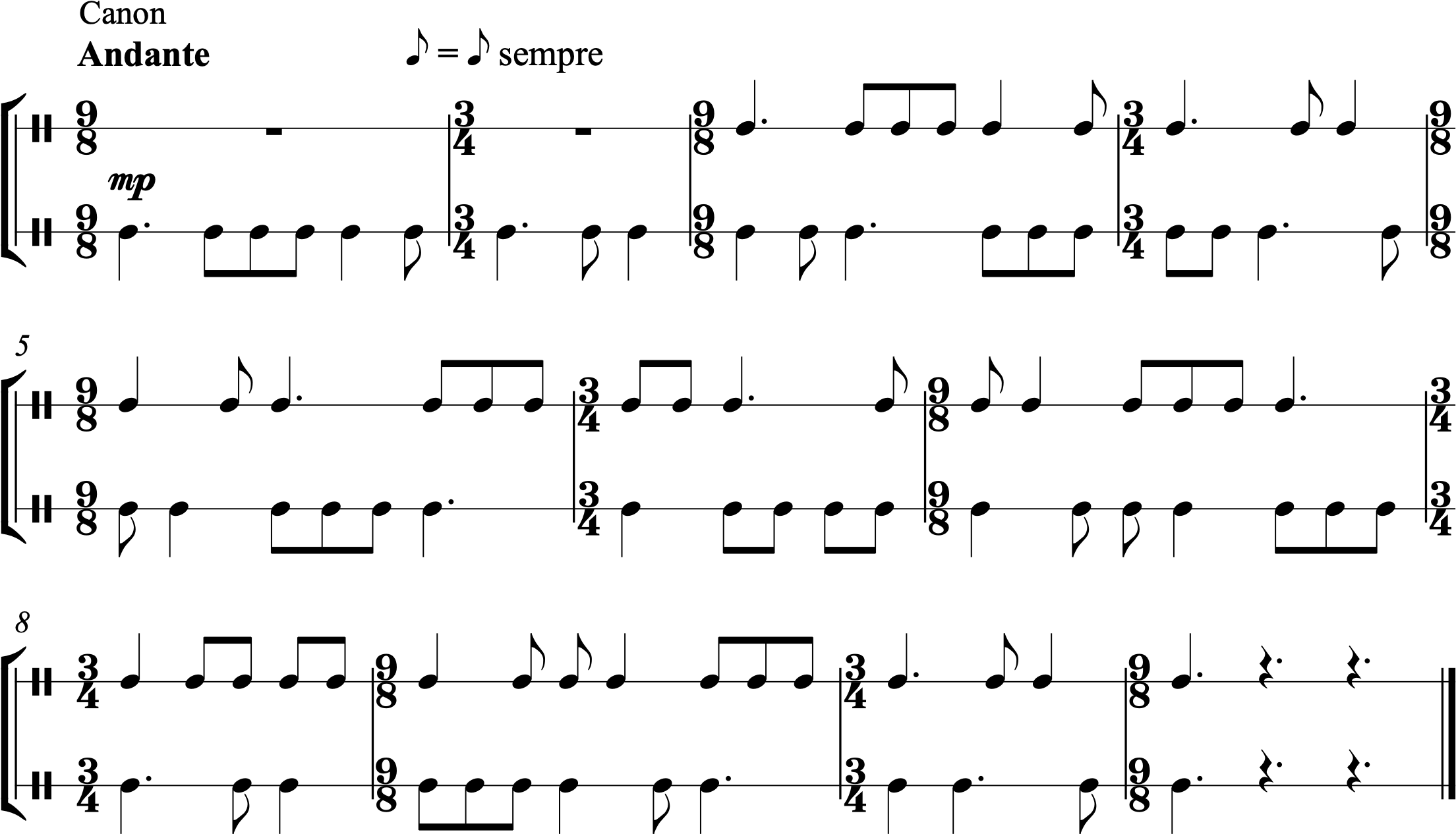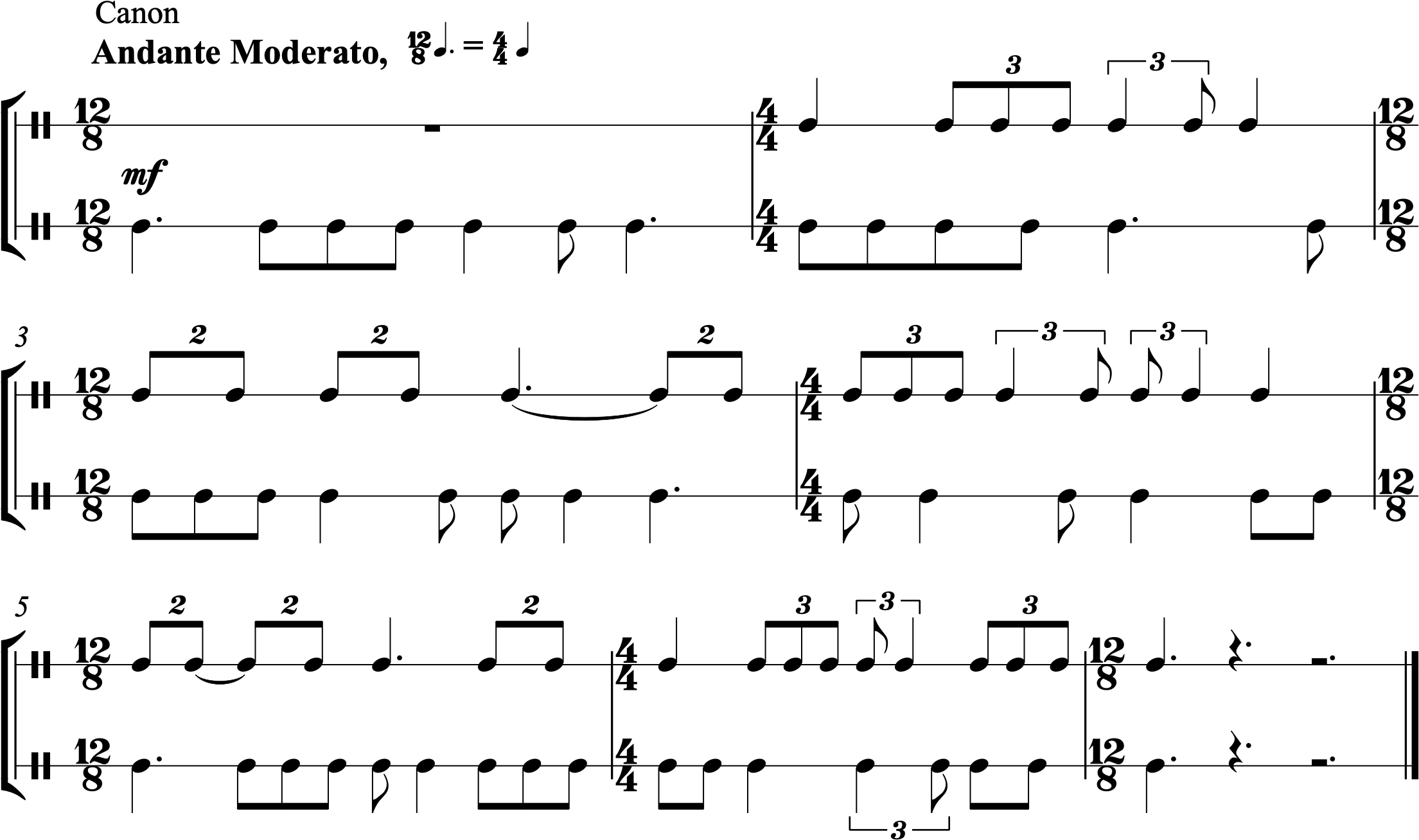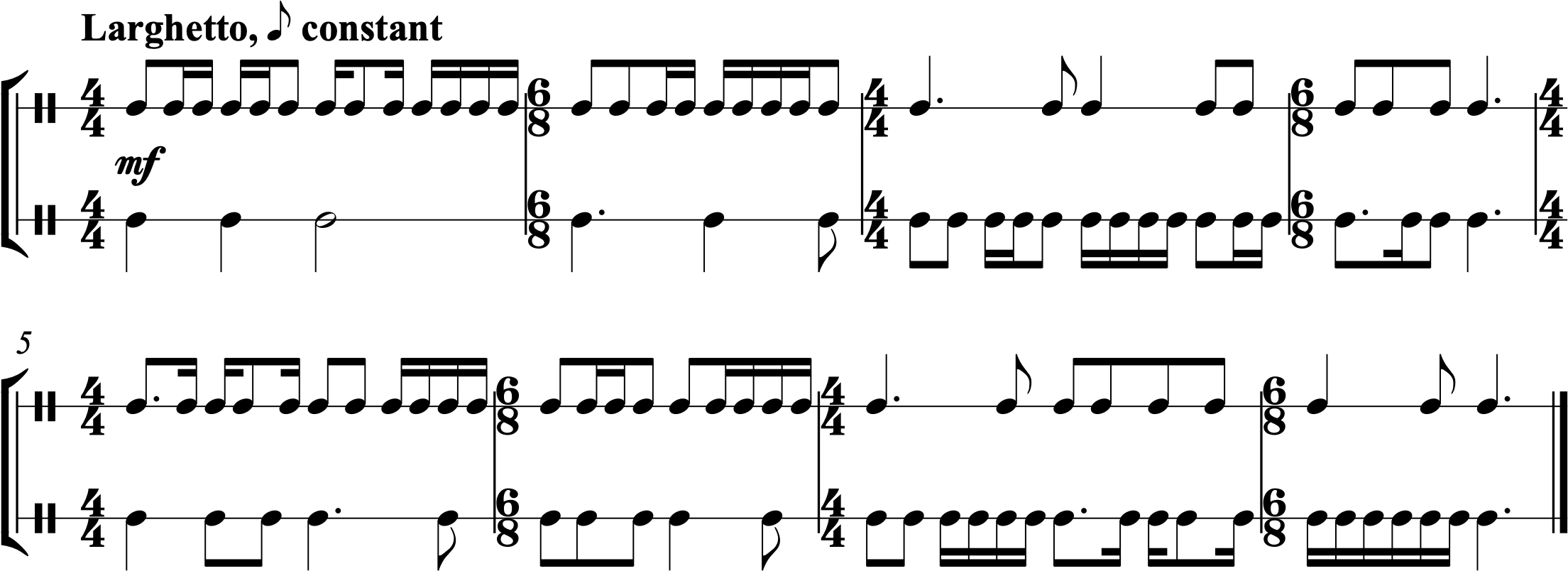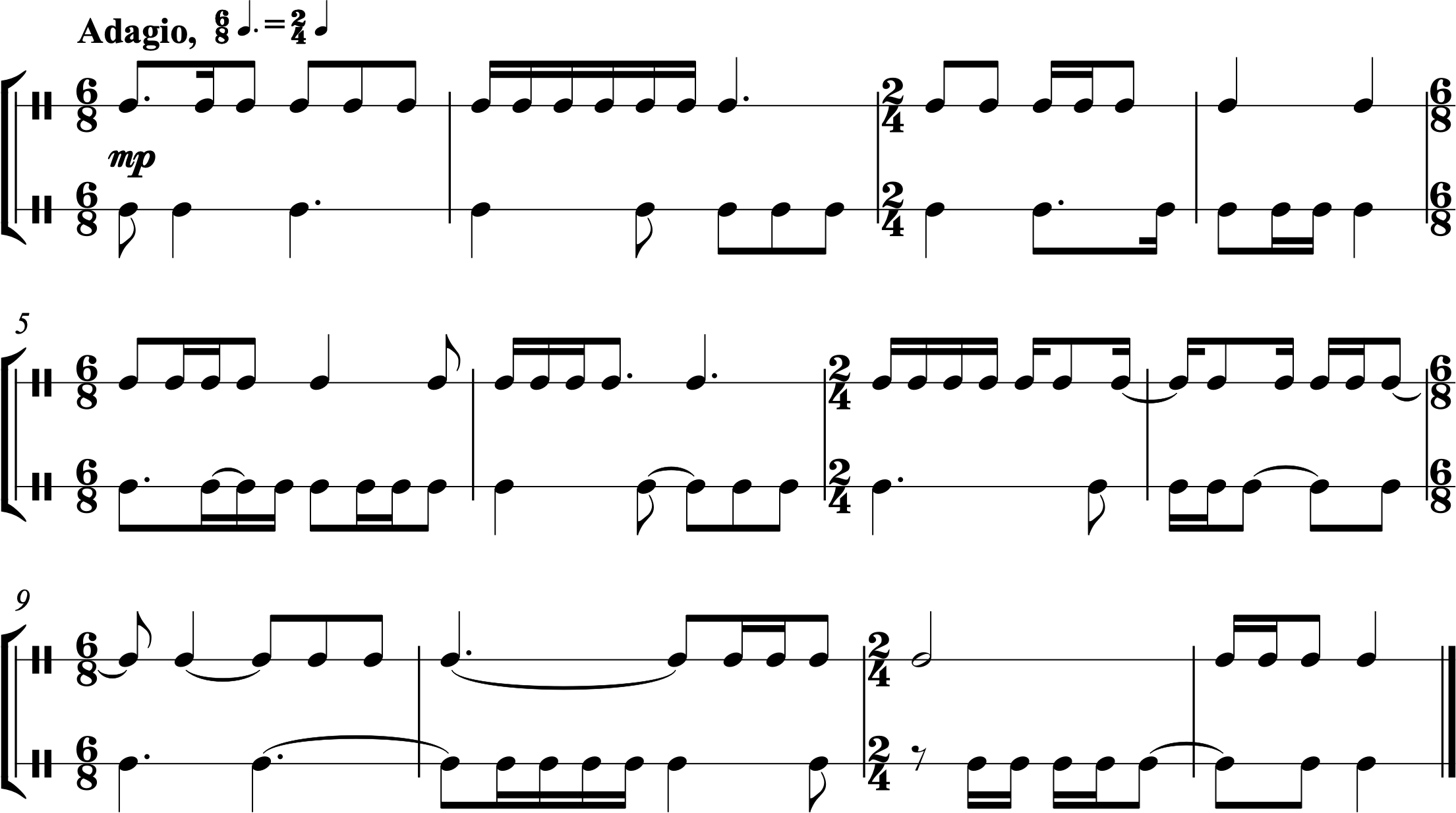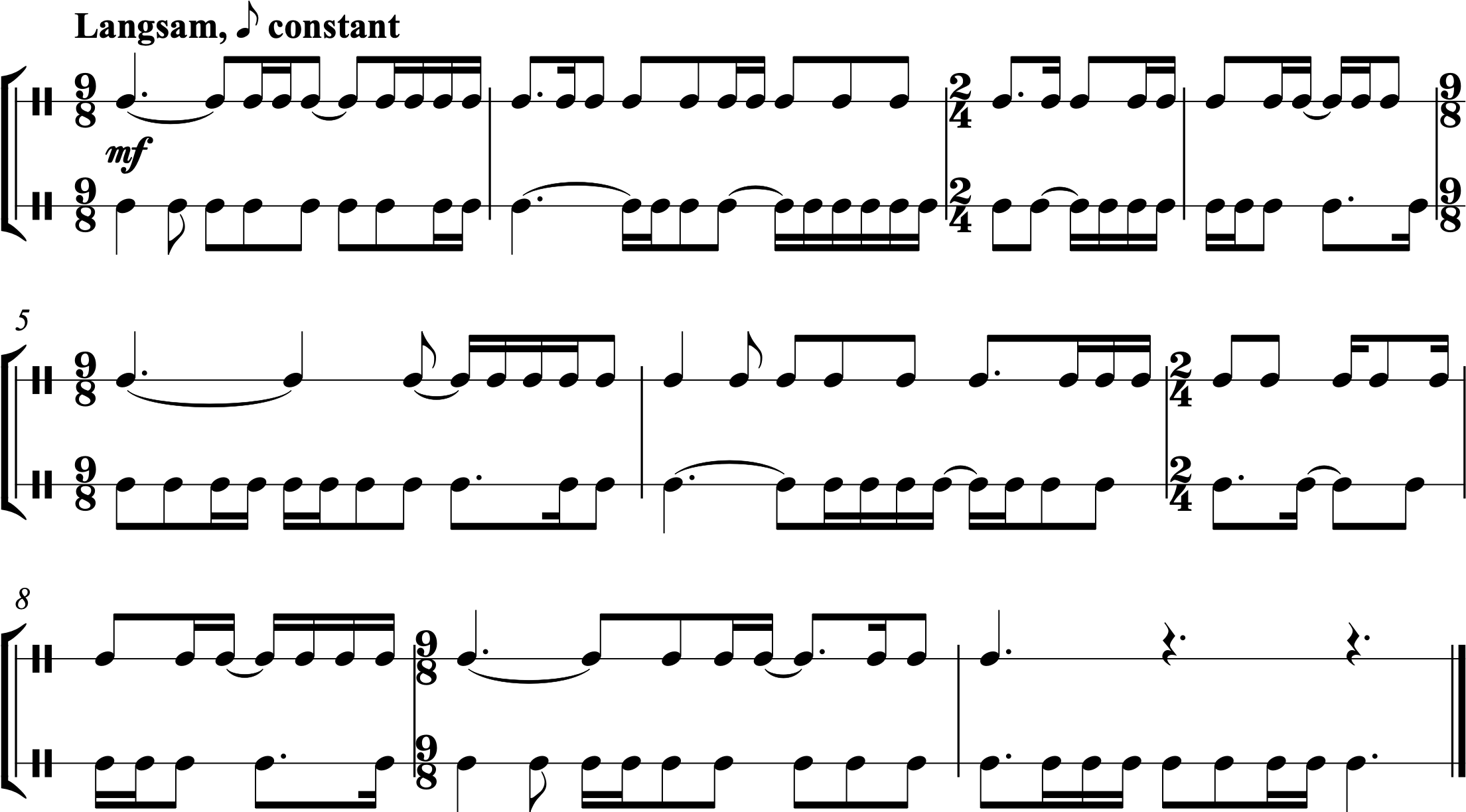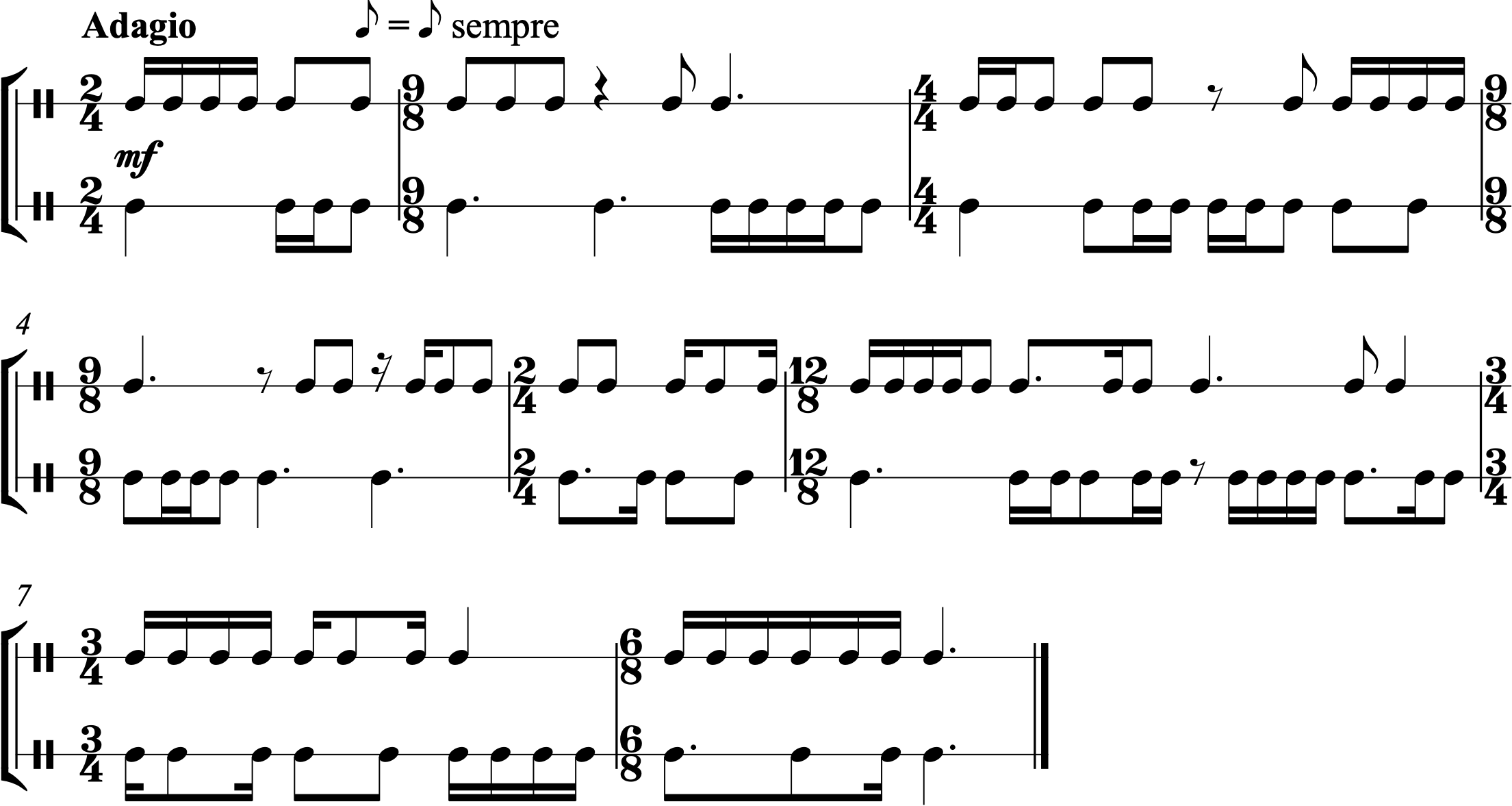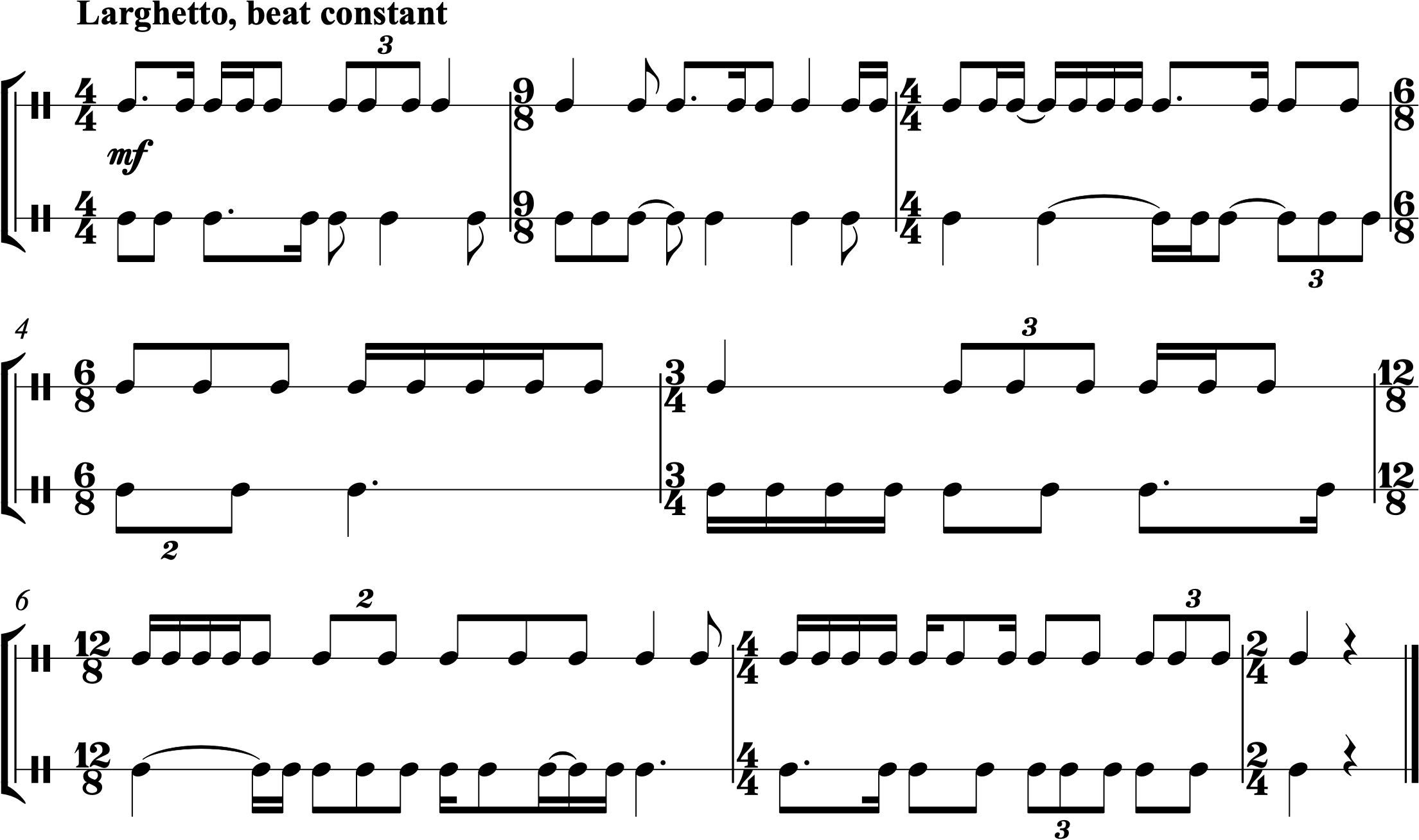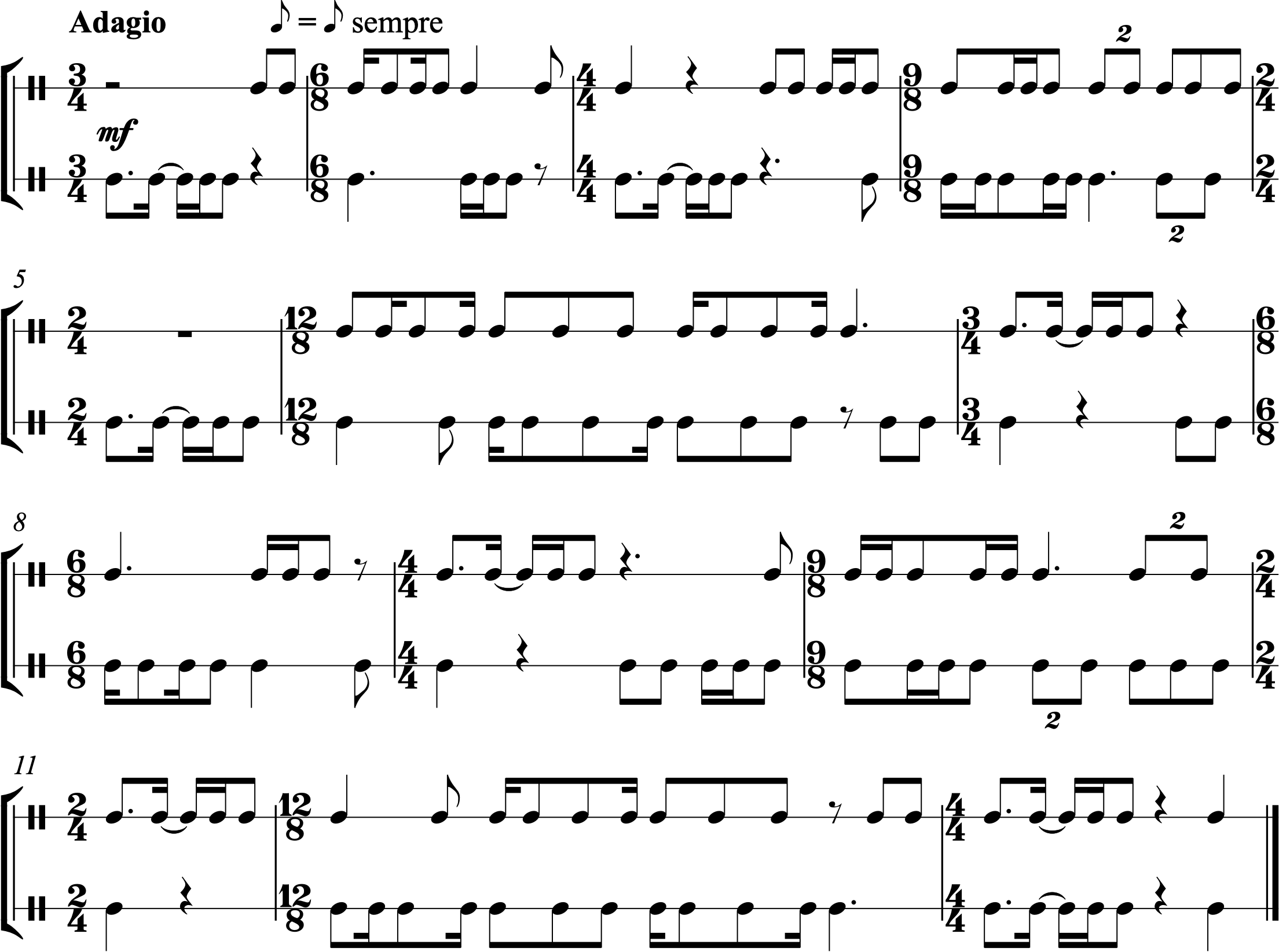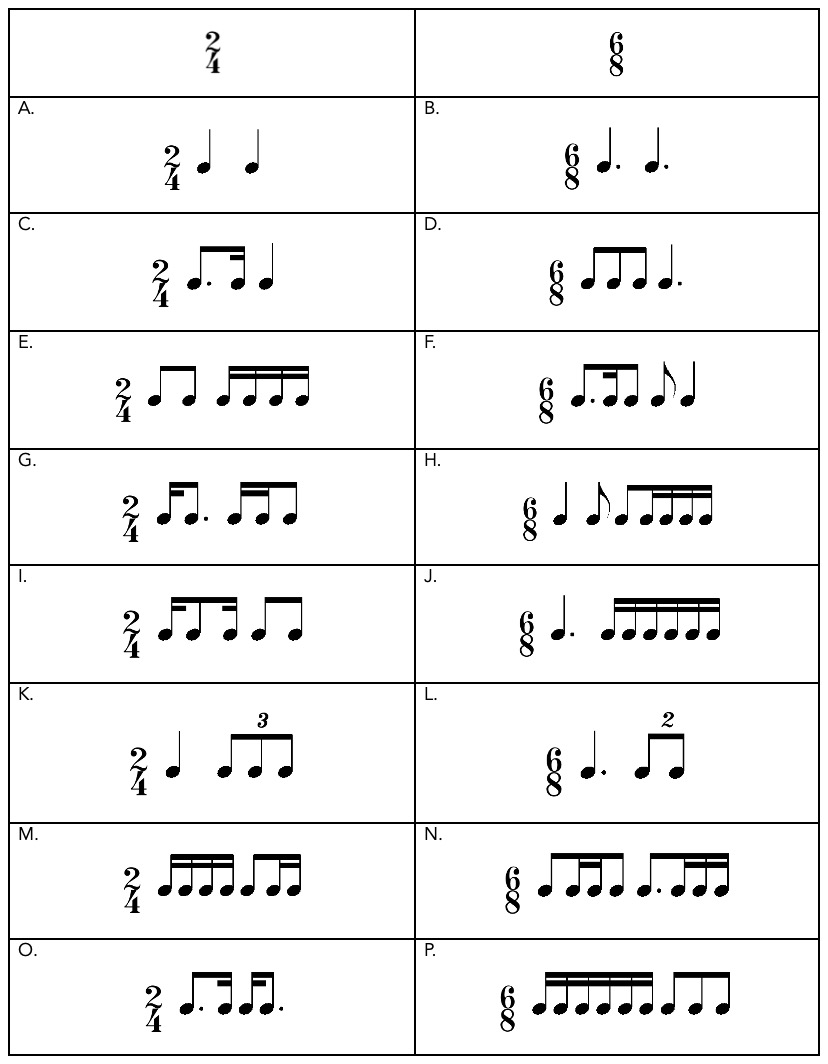Chapter 18: Changing Meters—simple to compound and compound to simple
About This Chapter
About This Chapter: In Chapter 17, we explored rhythms in which the meter changed, either from one simple meter to another or from one compound meter to another. But what if we switched from simple to compound or compound to simple? As we’ll see in this chapter, there are two ways that can happen—one with the beat constant and one with the division constant.
We’ll start with the beat constant. In the example below, the switch from 2/4 to 6/8 is accompanied by an indication that the quarter note in 2/4 should equal the length of the dotted quarter note in 6/8. This means that the beat pulse actually stays steady as we move from 2/4 to 6/8. So our conducting for the entire four-bar excerpt is a duple pattern with the same beat length.
The rhythm below actually sounds identical to the above rhythm, it’s just notated differently. The 6/8 eighth notes in the figure above sound like triplets in 2/4. That means that the 6/8 eighth notes in the figure above actually move faster than the 2/4 eighth notes in the same example.
The other way that we can switch from simple to compound meter or vice versa is to keep the division of the beat constant. The figure below replicates the rhythm from above, but with one important change: the indication at the switch into 6/8 tells us to keep the eighth-note pulse constant. Since the eighth note has to stay the same size as we move from 2/4 into 6/8, yet there are three eighth notes in a beat in 6/8 compared to only two in 2/4, the beat has to get longer to accommodate the extra eighth note. As a result, the beat will slow down as we move from 2/4 into 6/8.
In the examples throughout the chapter, you will see some meter changes with the beat constant and some with the division constant. Pay close attention to all indications and take a minute to analyze each example before performing it to make sure you know whether it is beat constant or division constant. If it’s beat constant, stay focused on the beat pulse. If it’s division constant, find a way to focus on the division pulse (even while conducting along with the beat).
Notation: There are several ways to indicate when the beat is staying constant and when the division is staying constant during meter changes. Consider the three examples below. In each of them, the division (eighth note) stays constant throughout, but they all indicate that in different ways. Similar notational differences can be used in beat-constant examples.
Section A—Changing between simple and compound meters with the beat constant
Demonstration
Practice
Practice A:
 Practice by performing along with this audio file, which features a metronome click and the notated rhythm. You will hear one measure of wood block to establish the tempo before the exercise begins.
Practice by performing along with this audio file, which features a metronome click and the notated rhythm. You will hear one measure of wood block to establish the tempo before the exercise begins.
Next, try performing along with this audio file, which features the notated rhythm but no metronome click. You will hear one measure of wood block to establish the tempo before the exercise begins.
1.
2.
3.
4.
5.
Section B—Changing between simple and compound meters with the division constant
Demonstration
Practice
Practice B:
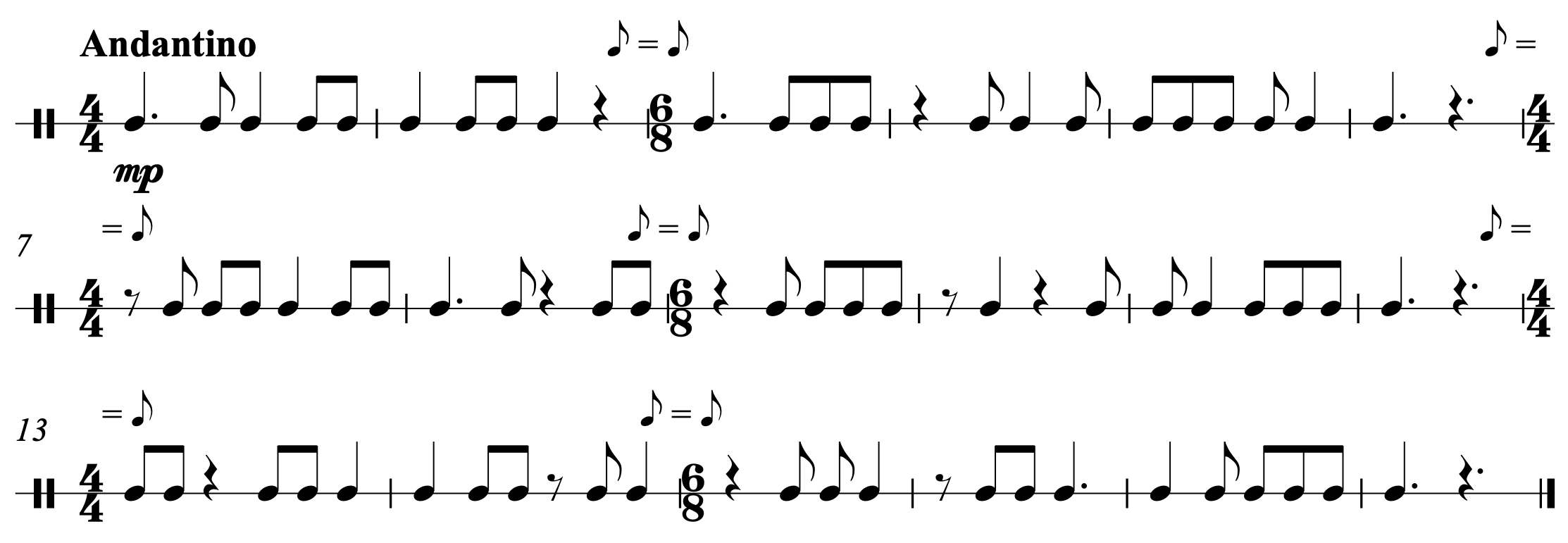 Practice by performing along with this audio file, which features a metronome click and the notated rhythm. You will hear one measure of wood block to establish the tempo before the exercise begins.
Practice by performing along with this audio file, which features a metronome click and the notated rhythm. You will hear one measure of wood block to establish the tempo before the exercise begins.
Next, try performing along with this audio file, which features the notated rhythm but no metronome click. You will hear one measure of wood block to establish the tempo before the exercise begins.
6.
7.
8.
9.
10.
Section C—More examples featuring changes between simple and compound meter
11.
12.
13.
14.
15.
16.
17.
18.
19.
20.
21.
22.
23.
24.
25.
26.
27.
28.
29.
30.
31.
32.
33.
Section D—Two-part rhythms featuring changes between simple and compound meter
34.
35.
36.
37.
38.
39.
40.
41.
42.
43.
44.
45.
46.
47.
48.
Rhythmic Cells
- For general suggestions on how to use these rhythmic cells, see Appendix: How to Use Rhythmic Cells.
- The left column features measures of simple duple meter (2/4), while the right column features measures of simple compound meter (6/8). Combine measures from each of the columns together to practice changing from simple to compound meter and vice versa. Before you begin, decide whether you will keep the beat constant (quarter = dotted quarter) or the division constant (eighth = eighth).
Rhythm in Context
Rhythm in Context example coming soon!
Citations
Poem:
- Jupiter Hammon (1711–ca. 1806), “A Poem for Children with Thoughts on Death,” public domain. From A Winter Piece, published 1782, Hudson & Goodwin, Hartford, CT.
Psalm:
- Scriptures marked “NIV” taken from the Holy Bible, New International VersionTM, NIVTM
- Copyright © 1973, 1978, 1984, 2011 by Biblica, Inc. Used with permission. All rights reserved worldwide. The “New International Version” is a trademark registered in the European Union Intellectual Property Office (EUIPO) and United States Patent and Trademark Office by Biblica, Inc. The “NIV”, “Biblica”, “International Bible Society” and the Biblica Logo are trademarks registered in the United States Patent and Trademark Office by Biblica, Inc. Used with permission.
Rhythm in Context:



















